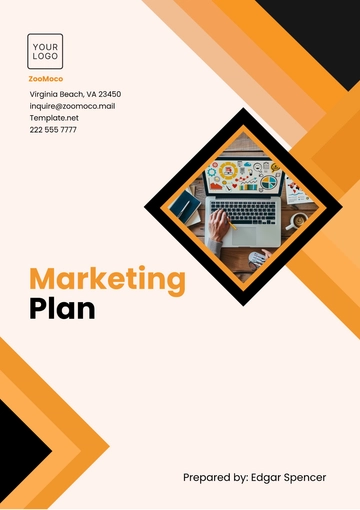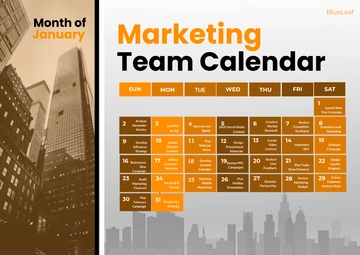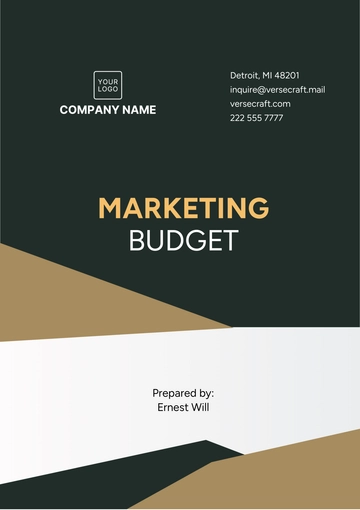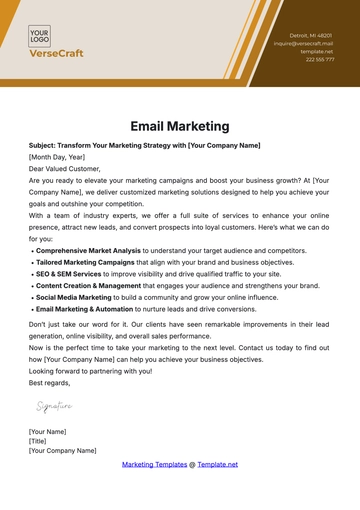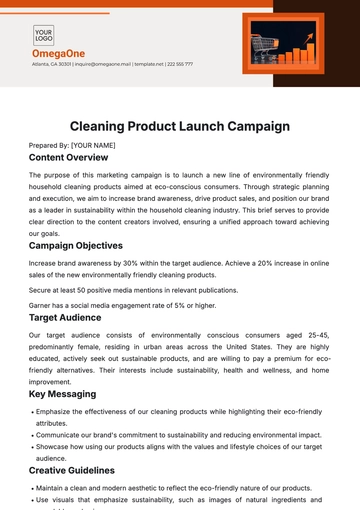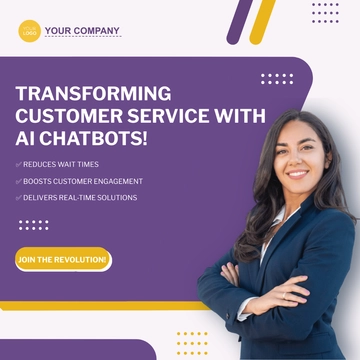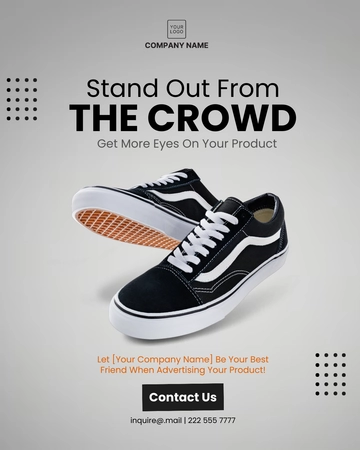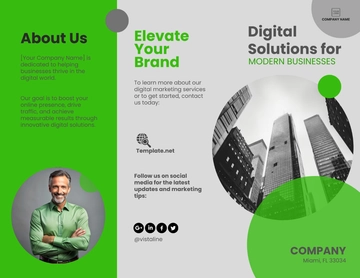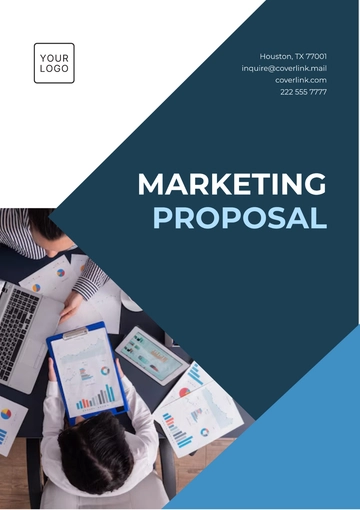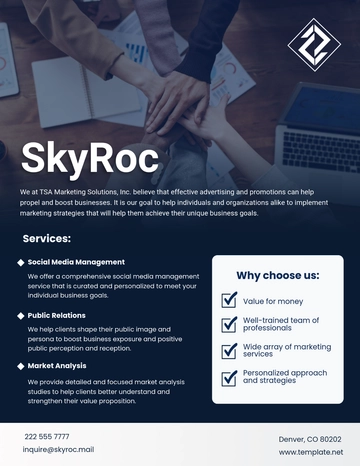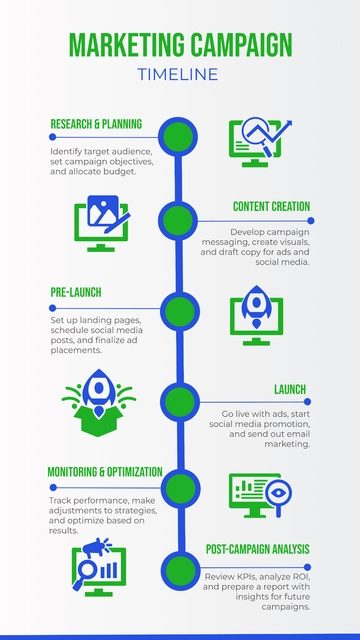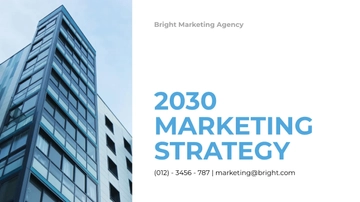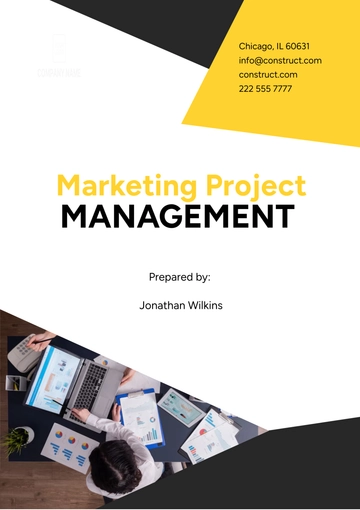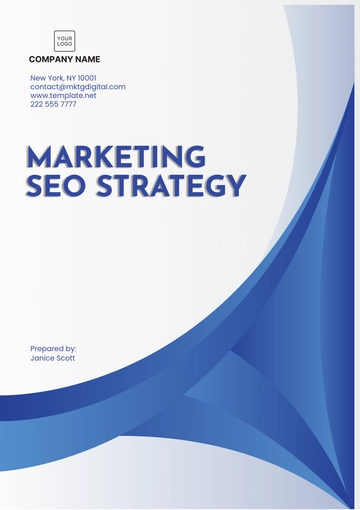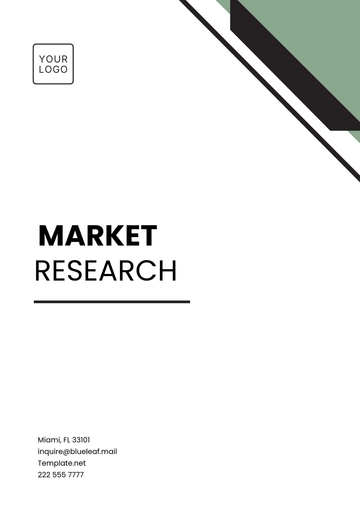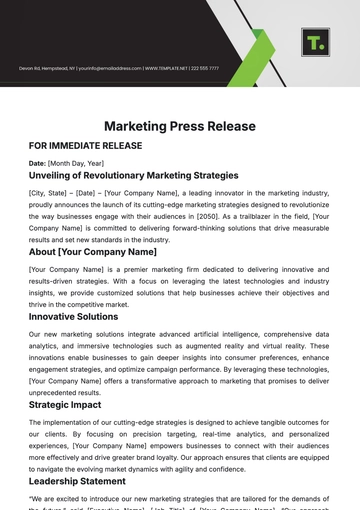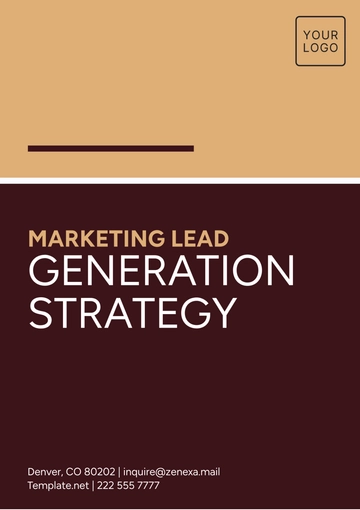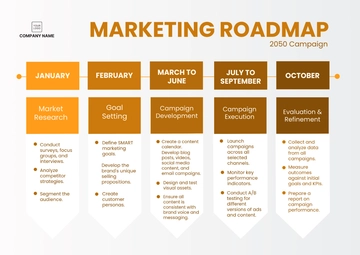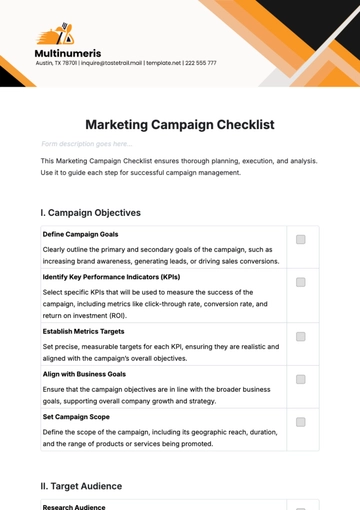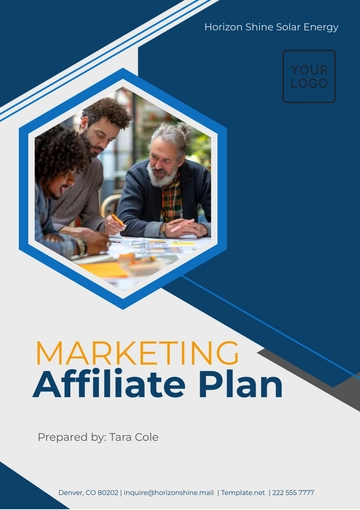Advertising Campaign Retrospective Outline
I. Campaign Overview
Title: "Innovate with [Your Company Name]"
Duration: [Month, Day, Year] - [Month, Day, Year]. This period was chosen to capture the start of the new year's market enthusiasm.
Budget: $5,000,000. This budget was allocated based on previous successful campaigns and market research.
Goals:
Increase brand awareness by 25%. Measured through surveys and social media analytics.
Boost website traffic by 40%. Tracked using Google Analytics and other web traffic monitoring tools.
Generate 20,000 new leads. Focus was on quality leads likely to convert into customers.
Target Audience: Tech-savvy professionals, aged 25-40, in North America. This demographic is known for its high disposable income and interest in technology.
II. Campaign Strategies
A. Channels Used:
Digital Advertising (Google Ads, Facebook, LinkedIn). These platforms were selected for their wide reach and demographic targeting capabilities.
Social Media Marketing (Instagram, Twitter). Focused on engaging content and influencer partnerships.
Email Marketing. Aimed at existing customers and subscribers with personalized content.
Outdoor Advertising (Billboards, Public Transit Ads). To capture attention in urban areas and commute routes.
B. Key Messages:
Emphasizing innovation and cutting-edge technology. This was to position [Your Company Name] as a leader in tech advancements.
Highlighting user-friendly and sustainable products. Reflecting the growing consumer interest in sustainability.
III. Performance Metrics
Total Impressions: 50,000,000. Indicating the extensive reach of the campaign across all channels.
Total Clicks: 2,500,000. Demonstrating the effectiveness of the ad creatives and call-to-actions.
Conversion Rate: 5%. Higher than the industry average, showing effective targeting and messaging.
New Leads Generated: 25,000. Surpassing the initial goal, indicating strong market interest.
ROI: 120%. A significant return, justifying the campaign investment.
Metric | Target | Actual | Difference |
|---|
Brand Awareness | [25%] | [30%] | [+5%] |
| | | |
| | | |
IV. Budget Allocation and Spending
A. Initial Budget Distribution:
Digital Advertising: 40%. To leverage the vast online audience.
Social Media Marketing: 25%. For engaging directly with consumers.
Email Marketing: 15%. Targeted for higher conversion rates.
Outdoor Advertising: 20%. For broad, local audience reach.
B. Actual Spending:
Digital Advertising: $2,000,000. Maximizing online presence.
Social Media Marketing: $1,250,000. For influencer partnerships and creative content.
Email Marketing: $750,000. Focused on segmentation and personalization.
Outdoor Advertising: $1,000,000. To make a physical brand presence.
V. Campaign Highlights and Challenges
A. Highlights:
High engagement on social media platforms, especially Instagram. This resulted in increased brand loyalty and customer interaction.
Significant increase in website traffic and session duration, indicating high content relevance and user interest.
Successful influencer partnerships on Instagram and Twitter, which amplified reach and credibility.
B. Challenges:
Lower than expected performance in email marketing campaigns, suggesting a need for better targeting and content optimization.
Delay in billboard ad placements due to logistical issues, causing a temporary gap in outdoor advertising presence.
VI. Customer Feedback and Market Response
A. Customer Sentiment Analysis:
75% positive feedback on social media. Indicating strong approval of the campaign messaging and creative approach.
High appreciation for product innovation and sustainability, aligning with the brand's core values.
B. Market Response:
Competitors increased digital marketing spend, showing the campaign's impact on the market.
Industry publications featured [Your Company Name] as a market leader, enhancing the brand's reputation and authority.
VII. Lessons Learned and Future Recommendations
A. Key Takeaways:
Importance of timely execution in outdoor advertising. Delays can lead to missed market opportunities.
Need to refine email marketing strategies, focusing more on personalization and segmentation.
B. Recommendations for Future Campaigns:
Increase investment in social media marketing. Due to its high engagement and conversion potential.
Explore newer platforms like virtual reality ads, to stay ahead in the technology and marketing fields.
Advertising Templates @ Template.net

